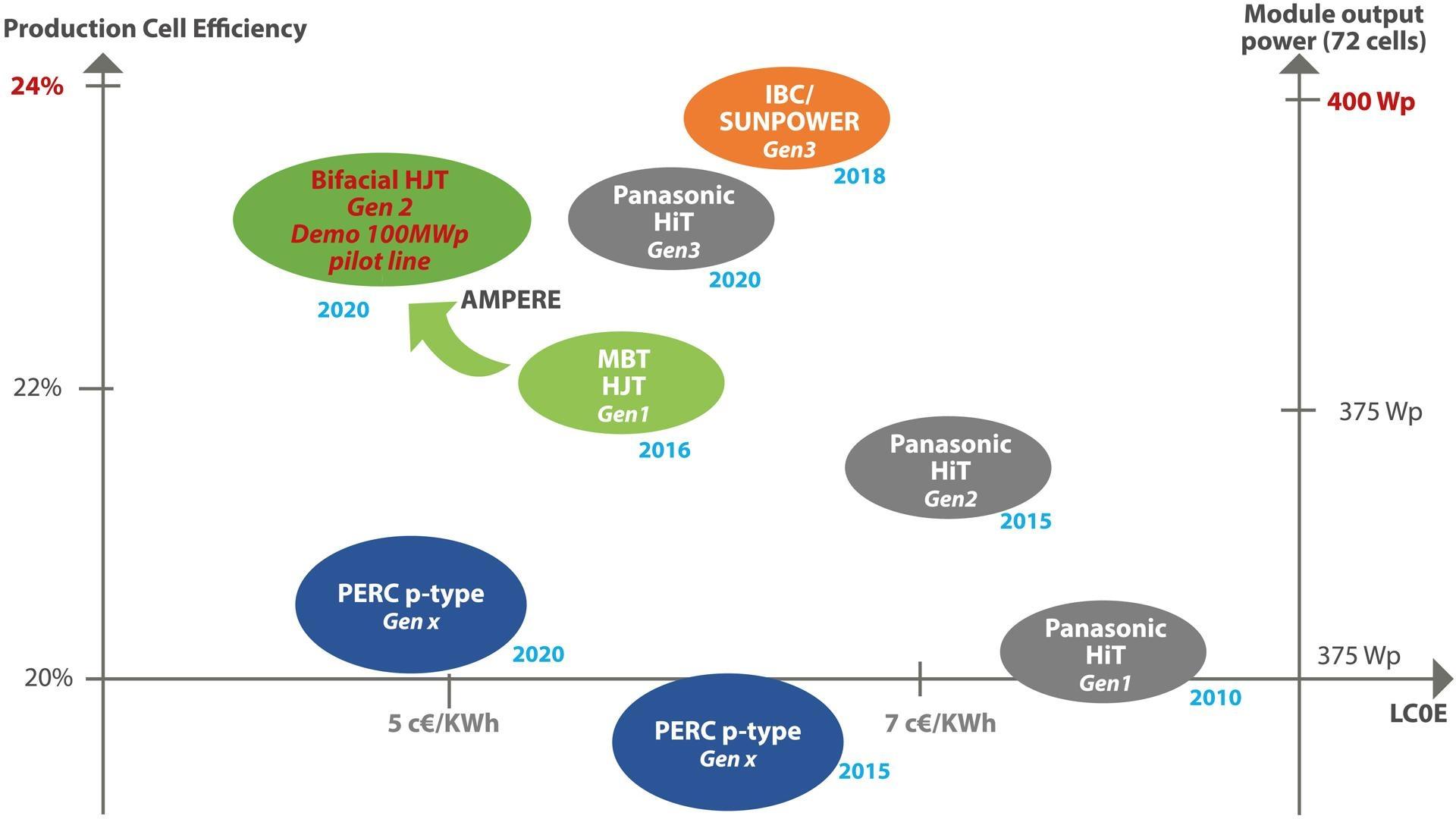IMPACT
Expected impact of AMPERE is to contribute to the rebuilding of a PV ecosystem in Europe and regain competitiveness and jobs. The project will focus on the KPI of the LCOE targeting a reduction of at least 15% if compared to conventional PV mc-Si technology.
The race for ultra-high efficiency PV modules generates an increasing level of complexity in the processes involving the manufacturing of more sophisticated products and hence the increase in related investment & fabrication costs. The market still requires a reduction of the technology cost to produce high efficiency industrial device with a low industrial process cost.
Through innovation on the right technology, there is an opportunity to rebuild a leading PV industry in Europe which will have the potential to compete with mainstream technology and properly address the new challenges such as:
- Improve performances without affecting the process complexity to maintain the CAPEX at a limited level
- Improve reliability towards 40 years lifetime for better LCOE
- Use of abundant, non-toxic materials
- Recyclable and low footprint technology
- Increase market need for the technology
HJT has demonstrated a large potential to address these five challenges. Furthermore, the HJT solar module can be fabricated in a bi-facial mode further enhancing the electricity production capacity by 15-20%, and opening up many market segments.
Europe has to de-risk and promote investments in manufacturing capacities, selecting the HJT to allow such a challenge. This decision will have important economic impact by maintaining and generating high added value industrial jobs in the different segments of the value chain: RTD, materials sourcing (c-Si, etc.), equipment (process control, manufacturing), cells & modules manufacturing in order to create a solid and leading ecosystem.



